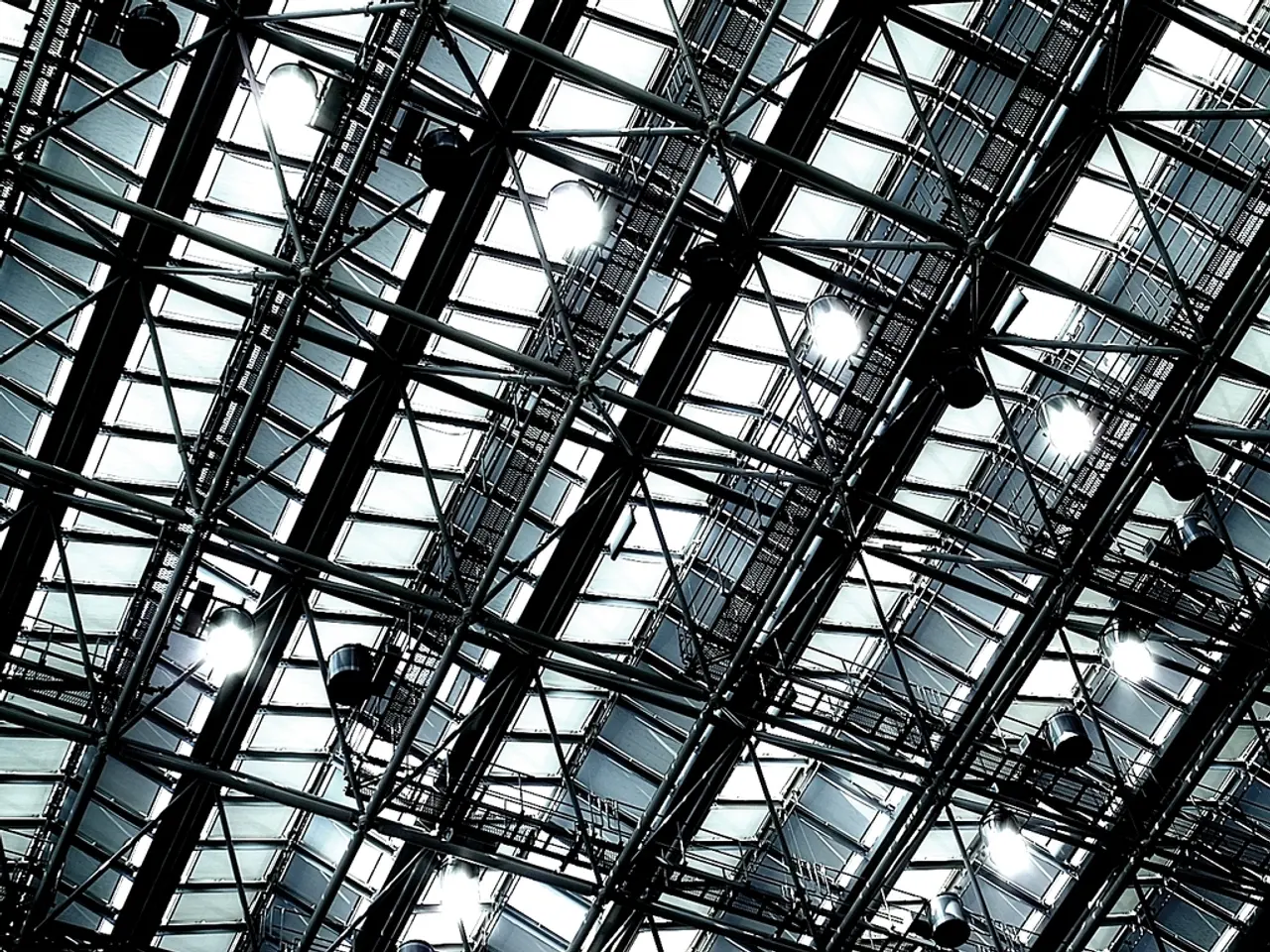Rooflight Varieties Explained: A Guide to Picking the Optimal Design for Your Residence
In the realm of home improvements, the choice of rooflights can significantly impact the aesthetic and functionality of a space. Two popular options are flat glass rooflights and roof lanterns, each offering unique benefits and drawbacks.
Flat Glass Rooflights
Flat glass rooflights are a preferred choice for those seeking maximum natural light and a minimalist, stylish design. Their slim profiles and attractive detailing make them an excellent fit for modern home additions. Moreover, they are often low maintenance, especially when fixed (non-opening), as they lack moving parts.
However, fixed flat glass rooflights do not provide ventilation, making them less suitable for areas where air circulation is important, such as kitchens and bathrooms. Additionally, potential issues with heat buildup and moisture can arise if ventilation is not adequately addressed, especially in warmer climates. Glass installation and sealing also require careful attention to prevent leaks, particularly in flat roof applications.
Roof Lanterns
Roof lanterns present a more architecturally significant and dramatic alternative. These structures offer a spacious, bright central focal point, providing more daylight over larger areas compared to typical flat rooflights due to their three-dimensional structure.
Designed with weather-tight and low-maintenance features, roof lanterns boast improved durability and safety. Slimline profiles mean they can be large while still maintaining aesthetic elegance and allowing abundant daylight. Moreover, they often allow the integration of multiple glazing technologies to improve thermal performance.
However, roof lanterns are generally more complex and costly to install compared to flat rooflights. They have more components and joints, which can mean a higher risk of leaks if poorly maintained or improperly installed. Additionally, they may have higher exposure to heat gain or loss due to their larger glass area and multiple facets, requiring careful specification of glazing and coatings.
Additional Considerations
If ventilation is essential, rooflights that can open or ventilated skylights are preferable. Energy efficiency can be enhanced with the use of low-E coatings, especially soft coat low-E glass, which balances daylight transmission and thermal performance. Both rooflights and roof lanterns improve the sense of space and connect interiors with the outdoor environment, desirable in home additions aiming for a light, airy feel.
In summary, flat glass rooflights offer a sleek, simple, daylight-enhancing option with low maintenance but no ventilation, while roof lanterns provide a larger, more architecturally significant daylight feature with potentially higher costs and maintenance but also greater interior impact. The choice depends on the need for ventilation, design preferences, budget, and thermal performance priorities.
Other rooflight options include walk-on rooflights, flat roof extensions, ridge rooflights, frameless designs, and conservation rooflights, each with its unique characteristics and applications. It's essential to consider these factors when making a decision to ensure the best possible outcome for your home addition.
- In the realm of home improvements, the choice of rooflights can significantly impact the aesthetic and functionality of a space.
- Flat glass rooflights are a preferred choice for those seeking maximum natural light and a minimalist, stylish design.
- Glass installation and sealing in flat glass rooflights require careful attention to prevent leaks, particularly in flat roof applications.
- Fixed flat glass rooflights do not provide ventilation, making them less suitable for areas where air circulation is important.
- If ventilation is essential, rooflights that can open or ventilated skylights are preferable.
- Roof lanterns present a more architecturally significant and dramatic alternative to flat glass rooflights.
- Slimline profiles mean roof lanterns can be large while still maintaining aesthetic elegance and allowing abundant daylight.
- Energy efficiency can be enhanced with the use of low-E coatings, especially soft coat low-E glass, in both rooflights and roof lanterns.
- Other rooflight options include walk-on rooflights, flat roof extensions, ridge rooflights, frameless designs, and conservation rooflights.
- It's essential to consider the need for ventilation, design preferences, budget, and thermal performance priorities when making a decision about rooflights.
- The best possible outcome for your home addition can be ensured by considering factors such as these when choosing rooflights.
- In home additions aiming for a light, airy feel, rooflights and roof lanterns improve the sense of space and connect interiors with the outdoor environment.




